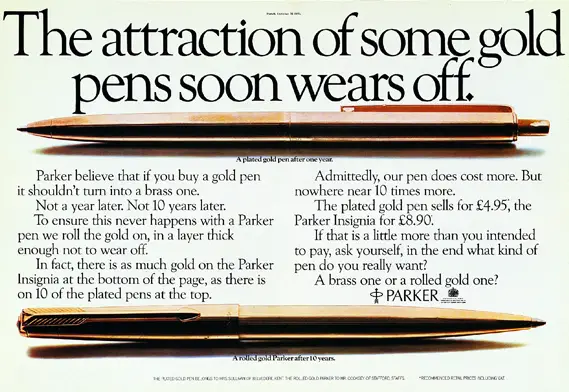Giles Keeble: that was the year that was – print ads, creative directing, digital and, er, Xmas
*I have recently moved house. In the process, I de-cluttered, which included throwing away much of my portfolio and giving away my annuals. A few things struck me. There were some good print ads that went un-awarded (not including the Qantas campaign I did with John Knight which didn’t get recognised because my then ECD removed them from the entries without telling me). Seeing those print ads (and David Abbott’s great body of work recently) made me reflect on print advertising today and on copywriting.
I have written before how many ads in the press category of awards are the same as the posters. This is not necessarily a bad thing, nor does short copy mean the art of copywriting is dead. However, these days it is hard to find long copy of the kind that Abbott, Tony Brignull (below), Richard Foster et al. wrote so well and so compellingly. Of course, there is still long copy – it’s in the newspapers and on the internet. As Howard Gossage once wrote:”People read what interests them. Sometimes it’s an ad.”


So we need good copywriting – it isn’t dead but it’s changed.
*I recently read Dave Trott’s book, Predatory Thinking (the new edition designed by his daughter). There is a lot of good stuff in it and well worth reading. Trott had his own distinct style of writing: short and pithy with lots of white space so it looked good and accessible on the page. One thing he writes about is creative directorship, something I had been thinking about separately.


In my experience, there are CDs who still write the ads. They set the standard at least. There are a few who are more like editors-they understand ads and have great judgement and can question and improve the work they see. For CDs who continue to write ads, there are those who encourage work from their department that they would not have created themselves; and those who expect to see the sort of work they would have done if they had the time. I fear there are too many of the latter: it’s a waste and while the department can learn from the master, it can be hard for them to develop their own talent subsequently.
This links to the question of who has the final say when it comes to creative work. In the agency, it should be the CD. What about the client? Are more clients today being directive? I hear stories, and of course agencies are always worried about the source of income. One of the courses I used to run with Susie Galbraith and Kathy Oldridge was essentially about hiring a dog and letting it bark. This comes down to much more than the work (judgement of which many clients are insecure about anyway).
It’s about the agency-client relationship, and the fact that different clients want different things from their agency – some thinking plus work, some just work (as Mike Sommers pointed out some years ago). There are ways of getting your own way, too. Trott quotes Jim Kelly’s ‘P&G triangle’ (see page 177) as an example of how things are altered: the client maintains the square they want is the same idea simply re-arranged. Frank Lowe used to say about client reasonableness of this nature: “Apart from that Mrs Lincoln, how did you enjoy the play?”
*And now for something different, but perhaps not completely. Digital. It’s all the rage. But what do we mean by it? It’s technologically different from analogue but it’s really a social and cultural change that takes in ‘social media,’ mobile and the ways of measuring it all. It covers a lot of different things and my point here is that it still needs a clear brief about what digital channel is being referred to, what people do with it, why it has been chosen for your brand, what you need to communicate and how you are going to get your message across. It’s another way of doing things.


*Finally, as I wish you all a Merry Christmas and a Happy New Year: Christmas ads. Oh, oh, oh! John Lewis is good though slightly sad that they are merchandising the penguin as if they were a Disney store, but why not you may say. The ad with the little boy a few years back takes some beating. A wonderfully shot film for Sainsbury’s is in my view questionable both from a point of view of taste and marketing. “Christmas is for sharing.” Not according to last year’s great Harvey Nicks campaign. To stand out you need to do something different but still relevant. If you haven’t seen it, have a look at this year’s ad for Mulberry.
And to adapt what the inimitable John Ebdon used to say at the end of his radio pieces, if you have been, thanks for reading.









